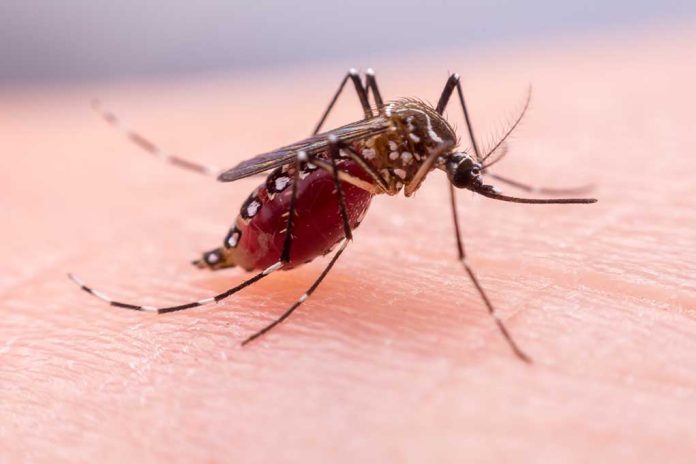
At a Glance
- Governor Kathy Hochul announced statewide actions following the first confirmed human case of EEE in New York since 2015, resulting in a death in Ulster County.
- The State Health Commissioner issued a Declaration of an Imminent Threat to Public Health for EEE, unlocking state resources for local health departments.
- Measures include mosquito spraying, increased access to insect repellent at state parks and campgrounds, and greater public outreach.
- EEE is a severe viral disease spread by infected mosquitoes, with no commercially available human vaccine.
Statewide Emergency Actions
Governor Kathy Hochul has declared an emergency and initiated a comprehensive response plan to combat Eastern Equine Encephalitis (EEE) after the first confirmed human case in New York since 2015 led to a fatality in Ulster County. The move mobilizes various state agencies to work closely with local health departments to implement mosquito control measures and public awareness campaigns.
The declaration unlocks state resources to support local health departments in executing EEE prevention and response activities. Enhanced mosquito control measures, such as extensive spraying, are being implemented. In addition, the state is distributing insect repellent in parks and placing signage to inform the public about preventive measures.
Simple steps can protect against Eastern Equine Encephalitis and other diseases carried by mosquitoes. Use insect repellant and eliminate outdoor standing water. Consider wearing long sleeves and tucking pants into socks when mosquitos are most active. https://t.co/kMuqB2KlMl pic.twitter.com/hFrBnWYRGN
— NYSDOH (@HealthNYGov) September 24, 2024
Multi-Agency Coordination
Multiple state agencies, including the Department of Health, Department of Environmental Conservation, and Parks Department, have been activated to coordinate a robust response to EEE. The measures taken include mosquito spraying, providing increased access to insect repellent in state parks, and launching public outreach campaigns. The State Office of Parks, Recreation, and Historic Preservation is also providing mosquito repellent at park offices and posting signage to increase awareness.
“Keeping New Yorkers safe is my top priority,” Governor Hochul said. “Following the first confirmed human case of EEE, my administration took statewide action to help protect communities – and with today’s declaration we’re making more state resources available to local departments to support their public health response. We’ve been informed this patient has passed away from EEE, we extend our sympathies and our hearts go out to their family.”
The initiative also includes educating the public through a social media campaign and heightened awareness about the severe risks of EEE. This emergency declaration covers the period from September 23 to November 30, 2024. EEE has presented itself more aggressively this year, with cases being reported in 15 counties across New York State.
Eastern Equine Encephalitis: What to know about EEE after New York resident dies from disease https://t.co/onY0kvaYBw
— NBC New York (@NBCNewYork) September 24, 2024
Significance of Declarations
State Health Commissioner Dr. James McDonald emphasized the unusual spread of EEE-carrying mosquitoes across New York this year. He stated, “Eastern equine encephalitis is different this year. While we normally see these mosquitoes in two to three counties each year, this year they have been in 15 counties so far, and scattered all over New York State. This life-threatening mosquito-borne disease has no commercially available human vaccine and must be taken seriously. Mosquitoes, once a nuisance, are now a threat. I urge all New Yorkers to prevent mosquito bites by using insect repellents, wearing long-sleeved clothing, and removing free-standing water near their homes. Fall is officially here, but mosquitoes will be around until we see multiple nights of below-freezing temperatures.”
EEE is a severe viral disease spread by infected mosquitoes. Symptoms of severe EEE cases include headache, high fever, chills, vomiting, disorientation, seizures, encephalitis, and coma, with a high mortality rate and potential for neurologic impairment in survivors. The public health declaration will allocate state resources to local health departments to combat EEE and encompasses a period when mosquito activity is high.
Public Safety Precautions
Recommendations to reduce the risk of EEE include wearing long sleeves, using insect repellents containing DEET, ensuring window and door screens are intact, and eliminating standing water where mosquitoes can breed. Other states, including Massachusetts, Vermont, New Jersey, Rhode Island, Wisconsin, and New Hampshire, have also reported human EEE cases this year, highlighting the regional severity of the virus.
Jennifer White, director of the Vector-Borne Disease Program at the New York State Department of Health, mentions, “In individuals who do survive eastern equine encephalitis, we often do see folks go on to have virologic deficits longer term. So [it’s] definitely one of our more severe arboviral infections.”
Symptoms include headache, high fever, chills, vomiting, disorientation, seizures, encephalitis, and coma, with a high mortality rate. Half of the survivors of severe EEE infections develop long-lasting complications. The peak period for EEE cases is from July through September. The CDC advises people to follow local and state guidelines to protect themselves from EEE.
Sources:
Governor Hochul Announces Statewide Action Following Confirmed Case of Eastern Equine Encephalitis
New York resident dies of rare mosquito-borne virus known as eastern equine encephalitis
NY governor declares deadly mosquito virus public health threat after confirmed case
Eastern Equine Encephalitis Death
New York Resident Dies of Eastern Equine Encephalitis Infection
New York Sees First Death From Mosquito-Borne EEE Virus—How to Protect Yourself
Eastern Equine Encephalitis Confirmed in Horses in Multiple New York State Counties













